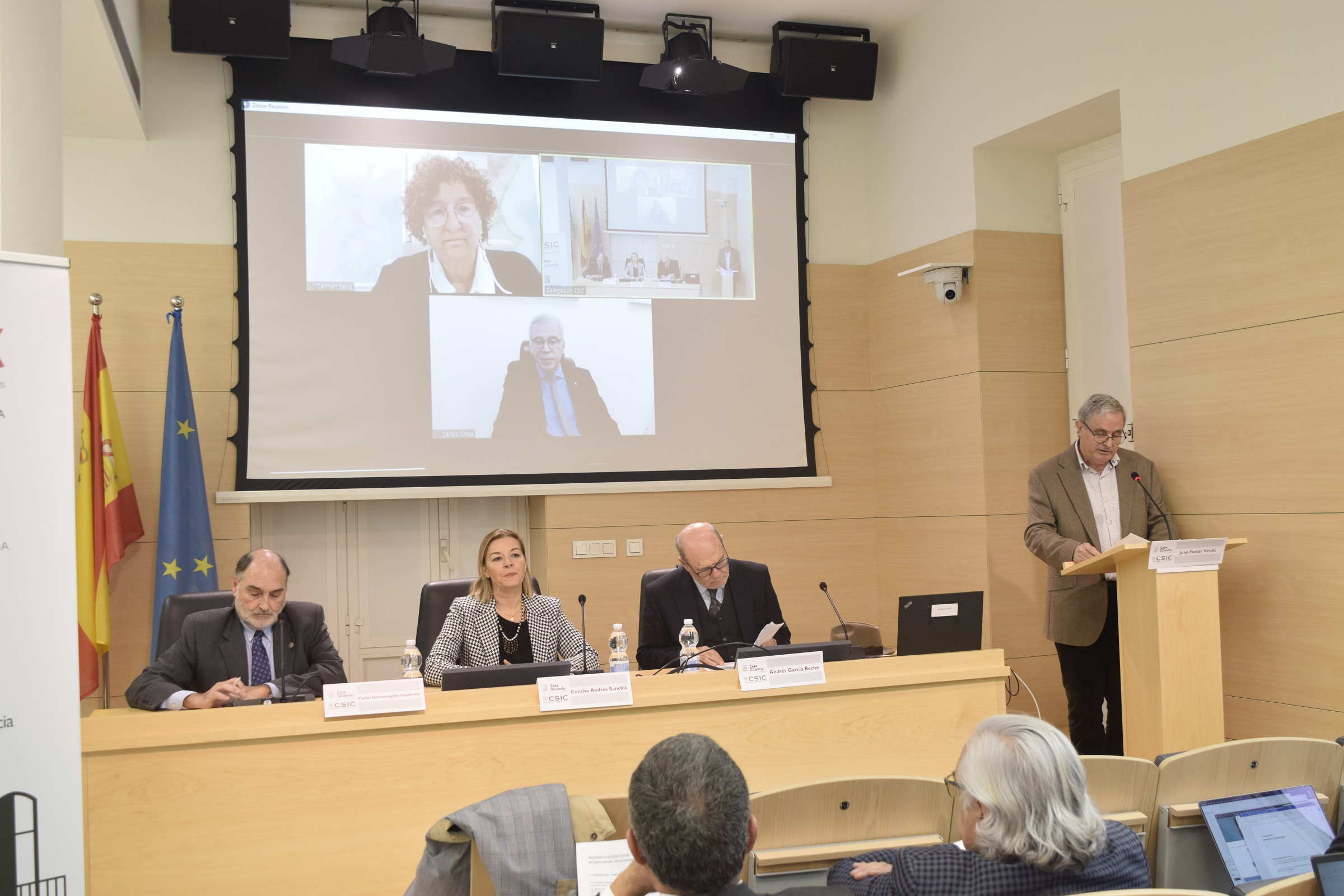
The headquarters of the Spanish National Research Council (CSIC) in the Valencia Region is today hosting a conference organized by the Institute of Corpuscular Physics (IFIC, CSIC-UV), CIEMAT and the Castellón Provincial Hospital Foundation to discuss the future of ion therapy in the fight against cancer in Spain. Attended by more than 60 experts from the fields of research, health, industry and public administration, the meeting opens a debate on the benefits of this new technique in an international context of implementation of heavy particle therapies against cancer. In addition, the technological challenges necessary to achieve its application in the medical field will be addressed.
The regional secretaries for Universities and Research, Carmen Beviá, and for Efficiency and Health Technology, Concha Andrés, as well as the executive vice-president of the Valencian Innovation Agency (AVI), Andrés García Reche, the vice-rector for Research of the UV, Carlos Hermenegildo, and the vice-president for Organization and Institutional Relations of the CSIC, Carlos Closa, will participate in the conference.
The institutional delegate of the CSIC in the Valencian Community, Juan Fuster, is one of the promoters of this conference, where the challenges for the implementation of ion therapy in Spain in the next decade are analyzed. “This requires a process of innovation that simplifies the instrumentation of the equipment and makes it possible to convert hospital spaces and make them suitable for therapy with heavy particles or hadrontherapy,” says Fuster, a CSIC researcher at the Institute of Corpuscular Physics.
Both conventional radiotherapy and hadrontherapy require accelerators that send the particles to the tumor tissue to destroy it. Radiotherapy uses photons, while hadrontherapy uses heavier particles such as protons (components of the atom’s nucleus) or ions (atoms that have had electrons removed). The complexity of heavy particle accelerators makes them more difficult to implement in hospitals, although this type of therapy has advantages: it is more effective, allows localized treatment of the tumor and reduces toxicity.
For Carlos Ferrer, general manager of the Castellón Provincial Hospital Foundation, “although cancer treatment with radiation is receiving a great boost in Spain, there are tumors in which much remains to be done. In sarcomas, pancreatic tumors or central nervous system tumors, commercially available technologies, whether with photons or protons, do not offer sufficiently satisfactory results. There is room here for ion therapy, which has not yet been developed, despite its great therapeutic potential.
While proton therapy is already implemented in developed countries (Spain has a plan to provide the public health system with 10 proton therapy units in collaboration with the Amancio Ortega Foundation), ion therapy is not yet developed despite its great therapeutic potential. “It is estimated that this technique optimizes the dosimetric benefit in oncology patients by three to five times compared to conventional therapy, both X-ray and proton therapy,” says Ferrer.
Most ion therapy facilities are based on a circular accelerator with a circumference of 60 meters, whose relatively high cost limits its expansion. “The challenge is to develop accelerators that are more compact, simpler and cheaper to operate and maintain,” summarizes José Manuel Pérez, head of CIEMAT’s Technology Department. “Linear accelerators based on radiofrequency systems (linacs) represent a reasonable alternative due to their capacity to vary the characteristics of the ion beam, particularly its energy, a modular design in line with the installation and a reduction in cost. For this reason, their development is one of the fundamental lines for a breakthrough in ion hadrontherapy”.
The conference brings together at the Casa de la Ciència representatives from CSIC centers, CIEMAT, Valencian public universities and other research organizations (CIPF, Institut Curie de Paris, Heidelberg Ion-Beam Therapy), together with doctors (hospitals of La Fe, Clínico Universitario and General de Valencia, San Juan de Alicante, Castellón, Vall d’Hebrón in Barcelona and the Clínica Universidad de Navarra in Madrid), representatives of the Center for Technological Development and Innovation (CDTI, Ministry of Science and Innovation), the Spanish Science Industry Association (INEUSTAR) and the Valencian Innovation Agency (AVI).
The participants contribute to outline the current panorama and future needs of cancer treatments with particle accelerators, from advances in conventional radiotherapy, through the implementation of proton therapy in Europe to ion therapy. This would complete a network with different levels and characteristics for treating patients depending on the type of tumor.
This is what is being developed in our neighboring countries, where, together with the progressive implementation of proton therapy centers, other carbon ion centers are being planned. Thus, for example, Italy has 3 proton therapy units in operation and one carbon ion unit, and 2 additional units are being installed. France, the United Kingdom, Germany and Switzerland have similar circumstances.
